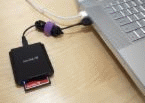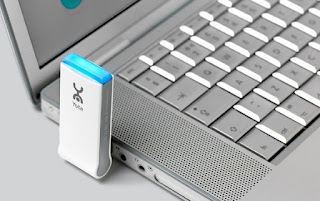How to Recover Data From a Dead or broken memory card
If the components in your drive are still functioning, you can recover the data yourself. If there's mechanical damage, send it to the pros. PM's complete guide to getting your files back.
so I have been having problems with my SD card. I was downloading music last night and it was working perfectly. Then I put my phone on the charger & when I woke up this morning there was a notification on my phone that said the card was unexpectedly removed. The SD card was in the phone the whole time & for some odd reason my phone can't read it (even though I ejected it & put it back in). I know it's not the phone acting up because I tried it with another SD card & that one worked perfectly fine. So what I want to know is what could have caused my SD card to just stop working like that? & is there any possible way that I can transfer all of my data from the messed up card to brand new card?
CardRecovery is the most focused of the applications reviewed here: It exists mainly to recover files from memory cards used in cameras. The only file types it works with are JPG and RAW-format image files, and video and audio files (e.g., AVI, MPG, MOV, MP3, WAV). It will not search for documents, archive formats, some image formats (such as Photoshop or PNG) and other day-to-day file types.
CardRecovery
CardRecovery Click to view larger image.
On the plus side, CardRecovery offered the best detection of CR2 files I found. In addition, its wizard interface made the recovery process quite easy. To begin a scan, just enter a drive letter, a camera brand (optional) and/or a file type (also optional), and a destination folder in which to save the recovered files.
The results of the scan are shown incrementally, although there's no preview mode during the scan, which makes it harder to tell if a given file is in fact what you're looking for without stopping the scan. A full scan of each of my 8GB devices took just under 10 minutes.
Once the scan's complete, you can preview JPGs (but only JPGs) and the program window can't be resized, so you can't ever see more than six thumbnails on the screen at once. This makes it a little harder to deal with RAW-format files, especially since file names aren't recovered: It might be easier to just recover everything and sort it out later.
Because CardRecovery can only work with devices that have a drive letter, it may not be of much use if you're dealing with a card whose partition information is damaged and therefore can't be assigned a drive letter. (PhotoRec, in contrast, can work with any device even if there's no partition data.)
CardRecovery offers a free trial version that will scan media and find lost files, but you must buy the full version to recover them.
CardRecovery download is less than 1 MB and you may get it in less than two minutes. Run the downloaded executable file and follow the instructions to install it to your computer. Then launch it from the Start Menu -> Programs -> CardRecovery. CardRecovery has three steps to complete the recovery.
Usually, in less than 10 minutes, you will get back all or most of your lost photos from the CF Card using the software. Using Card Recovery is safe because it performs read-only operations on your source card and it saves the recovered pictures to a destination folder you specify.
Click here to download CardRecovery
- Step 1: Select your camera brand and file type to recover (photo/video/audio).
- Step 2: CardRecovery will scan your CF Card for lost files.
- Step 3: CardRecovery will display all the recovered pictures in thumbnails to allow you to select the desired pictures before saving.
Usually, in less than 10 minutes, you will get back all or most of your lost photos from the CF Card using the software. Using Card Recovery is safe because it performs read-only operations on your source card and it saves the recovered pictures to a destination folder you specify.
CF Card Recovery Tips:
1. For a damaged or file system corrupted CF Card, Windows may prompt you to format the CF Card when it attempts to read and access the card. Please ignore that message and do not format it before you recover the lost photos.
2. To avoid possibly overwriting, do not take more pictures on the same memory card before you recover them. But if you have done that, try CardRecovery and it may still be able to recover the remainder pictures in most cases, but the pictures that were written over are unrecoverable.
 3. When you connect your digital camera to your computer, it may not appear as a drive letter in "My Computer", an external CF Card reader is needed. It will allow CardRecovery to access your memory card and recover the lost pictures. Some new desktops and laptops may already build in card reader.
3. When you connect your digital camera to your computer, it may not appear as a drive letter in "My Computer", an external CF Card reader is needed. It will allow CardRecovery to access your memory card and recover the lost pictures. Some new desktops and laptops may already build in card reader.
1. For a damaged or file system corrupted CF Card, Windows may prompt you to format the CF Card when it attempts to read and access the card. Please ignore that message and do not format it before you recover the lost photos.
2. To avoid possibly overwriting, do not take more pictures on the same memory card before you recover them. But if you have done that, try CardRecovery and it may still be able to recover the remainder pictures in most cases, but the pictures that were written over are unrecoverable.
 3. When you connect your digital camera to your computer, it may not appear as a drive letter in "My Computer", an external CF Card reader is needed. It will allow CardRecovery to access your memory card and recover the lost pictures. Some new desktops and laptops may already build in card reader.
3. When you connect your digital camera to your computer, it may not appear as a drive letter in "My Computer", an external CF Card reader is needed. It will allow CardRecovery to access your memory card and recover the lost pictures. Some new desktops and laptops may already build in card reader. Click here to download CardRecovery
Bottom line
If quickly recovering data from cameras is a priority, CardRecovery might be well worth the $40. Since the trial version allows you to preview recovered files, you can try that first to see if it suits your needs.


